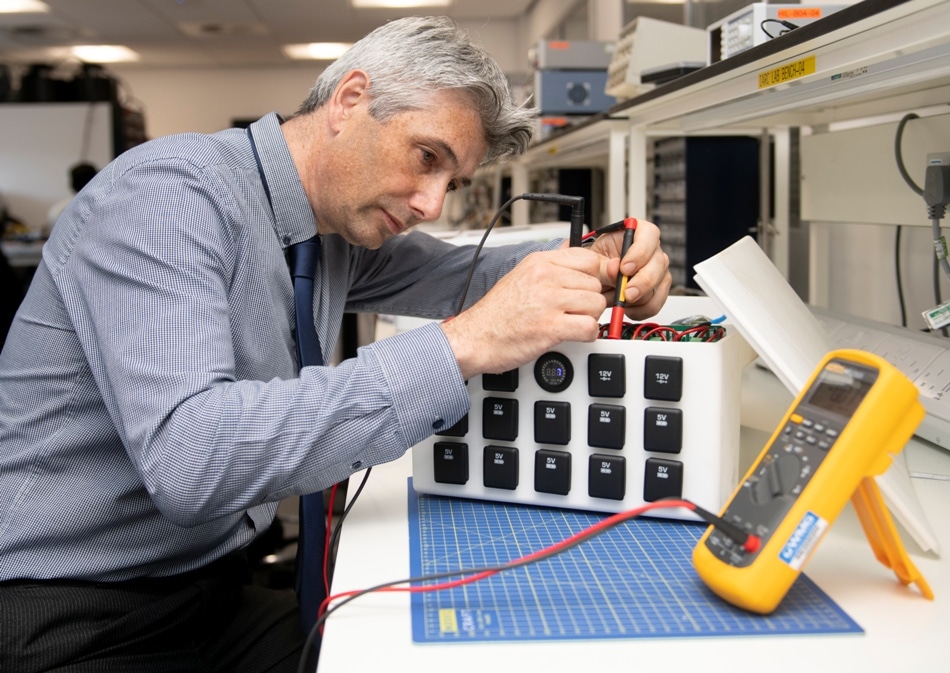Aug 14 2019
As the number of electric vehicles increases phenomenally, it becomes equally important to identify the most optimized way to reuse and recycle vehicle batteries. This observation was made as part of a Circular Economy for electric vehicle battery systems.
 Professor James Marco in the lab (Image credit: WMG, University of Warwick)
Professor James Marco in the lab (Image credit: WMG, University of Warwick)
Scientists at WMG, University of Warwick, have identified a new method to not only recycle those used batteries but also recycle them as compact energy storage systems (ESS) for off-grid sites in isolated communities or developing countries. Such repurposed systems, each containing an energy capacity of about 2 kWh, will have the ability to power multiple residential homes, a farm holding, or a small shop.
When an electric vehicle’s battery reaches the end of its useful life it is by no means massively depleted. It has simply reached the end of its useful life in a vehicle. It is generally accepted that an EV battery has reached end of life when its capacity drops to 80% of a fresh battery. While this is no longer enough to satisfy drivers, it remains immensely useful for anyone who seeks to use the battery in a static situation.
James Marco, Study Lead and Professor, WMG
Although such partly depleted batteries continue to be potentially valuable to other users, there are still challenges that need to be resolved. For example, it has to be specifically ensured that these batteries are utilized cheaply, reliably, and sustainably in remote locations.
These challenges are as follows:
- Can the ESS be made adaptable with a range of other used battery modules and cells from other makers?
- How to safeguard the lithium-ion cells from the over-charge and discharge cycle
- How to keep it cost-effective and easy to maintain, while offering an interface that is both user-friendly and easy to understand
At the University of Warwick, the WMG team set about resolving these challenges with the aid of the WMG HVM Catapult and Jaguar Land Rover that provided components and batteries from their first all-electric performance SUV—the Jaguar I-PACE.
The researchers engineered an innovative battery management system (BMS) and packaging that enabled them to build an easily portable, working prototype ESS, which included:
- The use of typical cost-effective components for communication, safety, and control functions. All parts were either low-cost components bought from any electrical retailer or were sourced from the JLR service department.
- Streamlined control system for convenient integration and deployment.
- The potential to have the 2nd–life module charged through reclaimed laptop chargers.
- Multiple 5 V USB charge ports and 12 V DC sockets
- Sufficient energy for a farm holding, small shop, or multiple residential homes
- The potential to utilize different modules that can possibly be interchanged within the 2nd-life system without the need to recalibrate the entire BMS.
Professor James Marco continued: “This is a great result that not only provides a highly efficient repurposing solution for automotive batteries but which could also change lives in remote communities. We are now looking for support to allow these new units to be further developed and tested in remote or off-grid locations.”
The research project is supported by the WMG High Value Manufacturing (HVM) Catapult, and was part of the Innovate UK funded Project: 2nd hEVen (2nd-Life Energy Storage Systems).